Alcohol is a significant preventable cause of poor health and wellbeing in Boroondara. Alcohol consumption places people at increased risk of more than 200 physical and mental illnesses. Episodes of heavy drinking place the drinker and others at risk of injury or death (World Health Organisation alcohol factsheet, 2023).
There is no safe limit for alcohol consumption. To reduce the risk of harm from alcohol-related disease or injury, healthy men and women should drink no more than 10 standard drinks per week and no more than 4 standard drinks on any one day. People under 18 should not drink alcohol at all (National Health and Medical Research Council, 2020).
Despite the risks, Australians have low awareness of health guidelines for alcohol consumption, and most are unaware of the link between alcohol consumption and cancer (Foundation for Alcohol Research and Education, 2020).
Self-reported alcohol consumption
The data shown in Figures 1, 2, 3 and 4 is based on the 2017 Victorian Population Health Survey. Risk categories for alcohol consumption were based on the 2009 Australian Alcohol Guidelines, which have since been updated. The 2009 guidelines recommended:
- drinking no more than 2 standard drinks on any day to reduce the lifetime risk of harm from alcohol
- drinking no more than 4 standard drinks on a single occasion to reduce the risk of alcohol-related injury arising from that occasion.
Lifetime risk from alcohol-related harm includes many types of cancer and cardiovascular diseases and illness such as cirrhosis of the liver, dementia and other cognitive problems. Short-term alcohol-related harm can include road crashes, falls, drowning, suicide and acute alcohol toxicity (National Health and Medical Research Council, 2020).
Many adults (18 years and over) in Boroondara report alcohol consumption patterns that put them at risk of alcohol-related harm (Figure 1).

Figure 1: A quarter of Boroondara adults drink enough alcohol to increase their short-term risk of harm at least once a month. Almost half drink enough to put them at lifetime risk of illness at least once a month. Source: 2017 Victorian Population Health Survey
In Boroondara, men were more likely than women to be at risk of injury from a single episode of drinking (Figure 2). This is consistent with the state-wide pattern. Men in Boroondara (and Victoria) were also more likely to consume alcohol at levels that increase lifetime risk of alcohol-related illness.

Figure 2: In Boroondara, men are more likely to drink at levels that put them at risk of alcohol-related harm more frequently. Source: 2017 Victorian Population Health Survey
Comparing self-reported alcohol consumption in Boroondara and Eastern Metropolitan Region Local Government Areas suggests that Boroondara adults, particularly women, are at higher risk than their counterparts: with lower rates of abstaining from alcohol, and more frequent consumption of 3 or more standard drinks in a day, consistent with increased lifetime risk of harm (Figures 3 and 4).
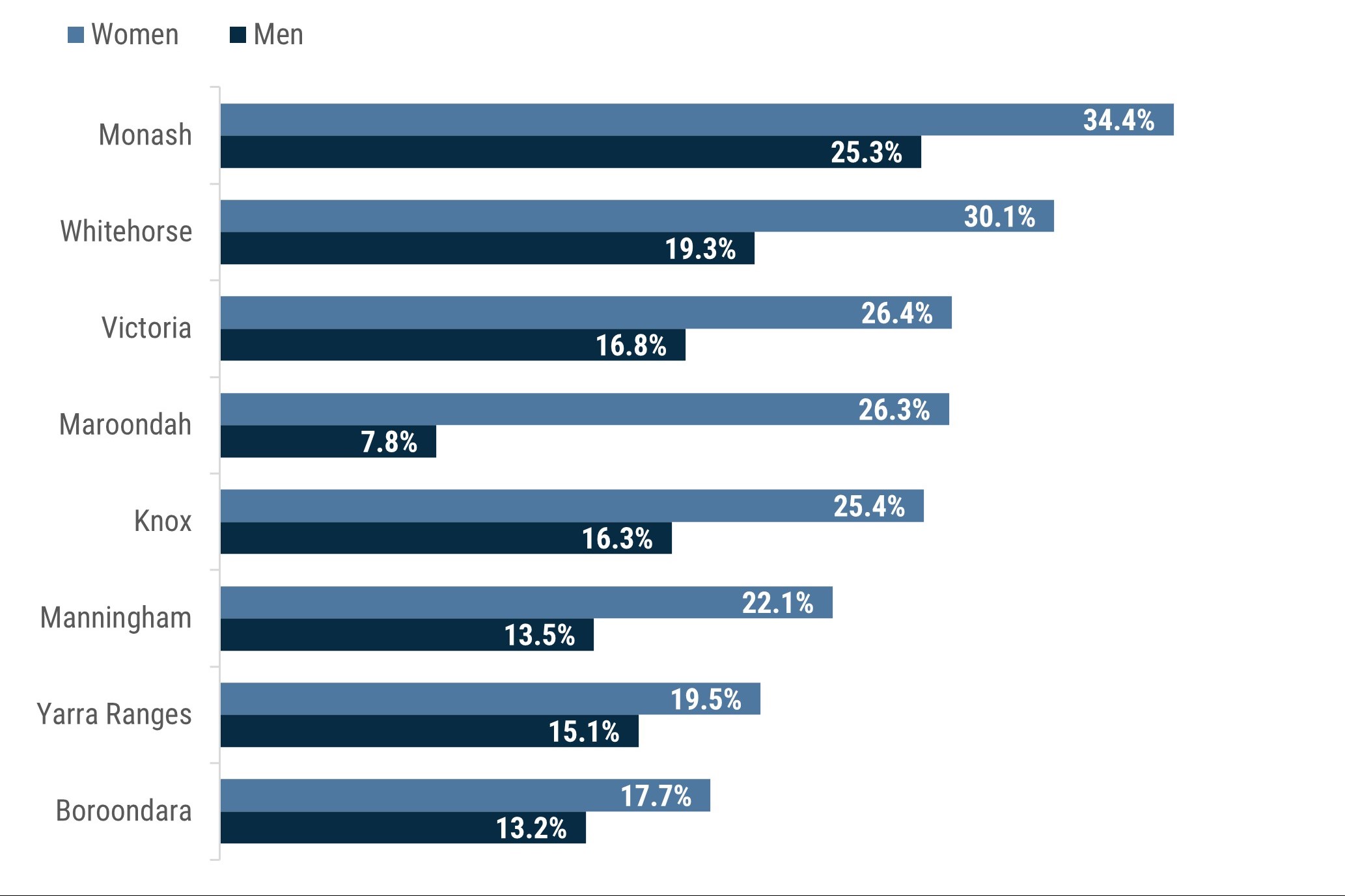
Figure 3: Boroondara women have the lowest rate of abstaining from alcohol among Eastern Metropolitan Region Local Government Areas. Boroondara males are second lowest, with a similar rate to Manningham. Source: 2017 Victorian Population Health Survey
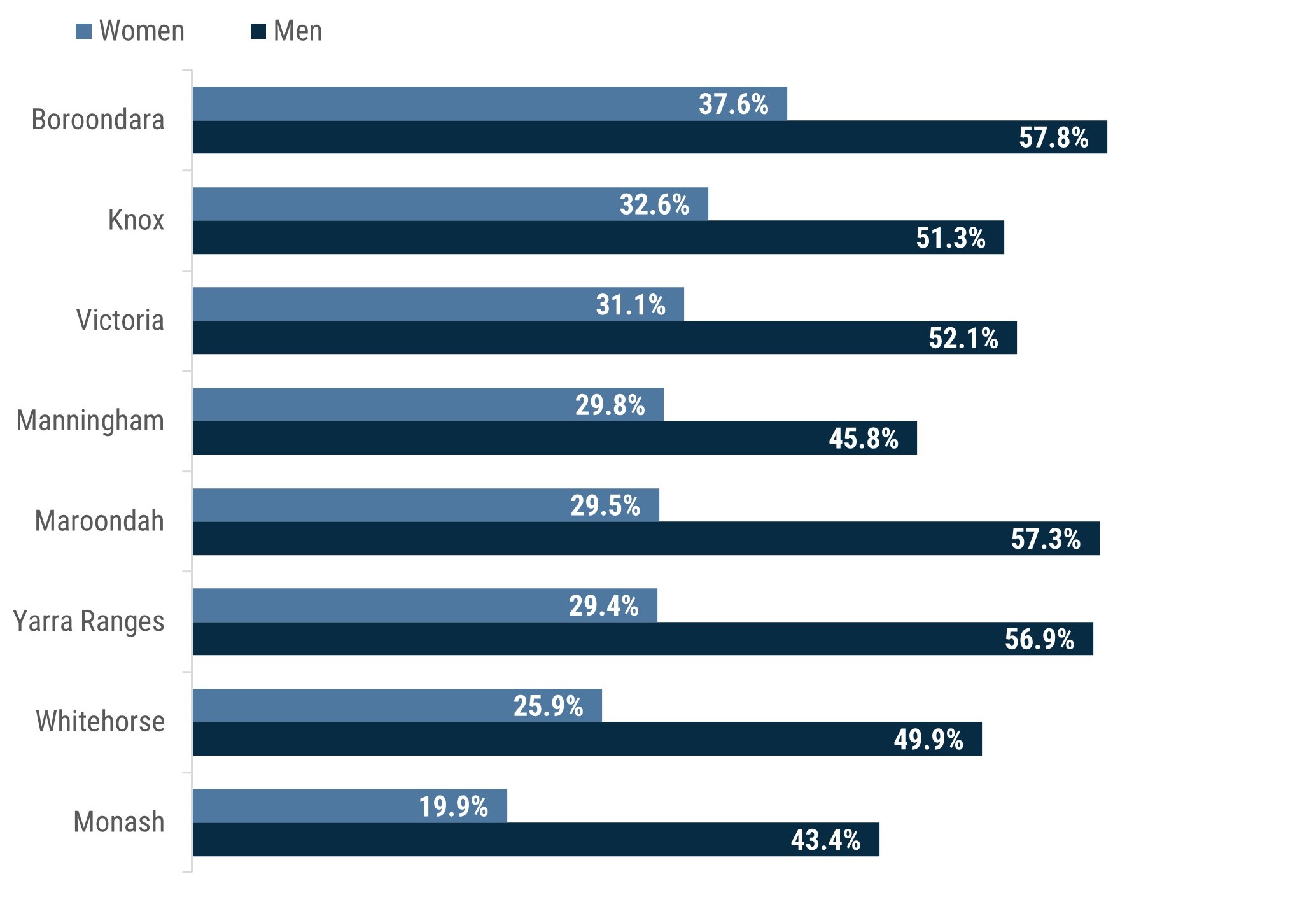
Figure 4: Among Eastern Metropolitan Region Local Government Areas, Boroondara women had the highest rate of frequently (monthly or weekly) drinking alcohol at levels that put them at lifetime risk of harm. Source: 2017 Victorian Population Health Survey
In 2018, an estimated 51.5% of Year 8 and 11 students in Inner Eastern Melbourne (Boroondara, Manningham, Whitehorse and Monash) reported they had drunk alcohol (more than a few sips). This was slightly higher than the estimated rate of 47.3% for metropolitan Melbourne (Victorian Child and Adolescent Monitoring System 2022).
Indicators of alcohol-related harm
The following information was sourced from Turning Point's AODstats – Victorian alcohol and drug statistics.
Deaths of Boroondara residents from alcohol-related events remained at a consistent rate between 2014 and 2020 (the most recent data available) (Figure 5). Hospital admissions of Boroondara residents for alcohol-related disease conditions saw a drop (of 13%) in 2019–20. A drop was also evident for metropolitan Melbourne, but it was less pronounced. Alcohol-related ambulance attendances to Boroondara locations dropped off in 2021–22. A drop of similar magnitude occurred across metropolitan Melbourne and is likely to be at least in part due to lockdowns and the associated limitations on social gatherings and venues.
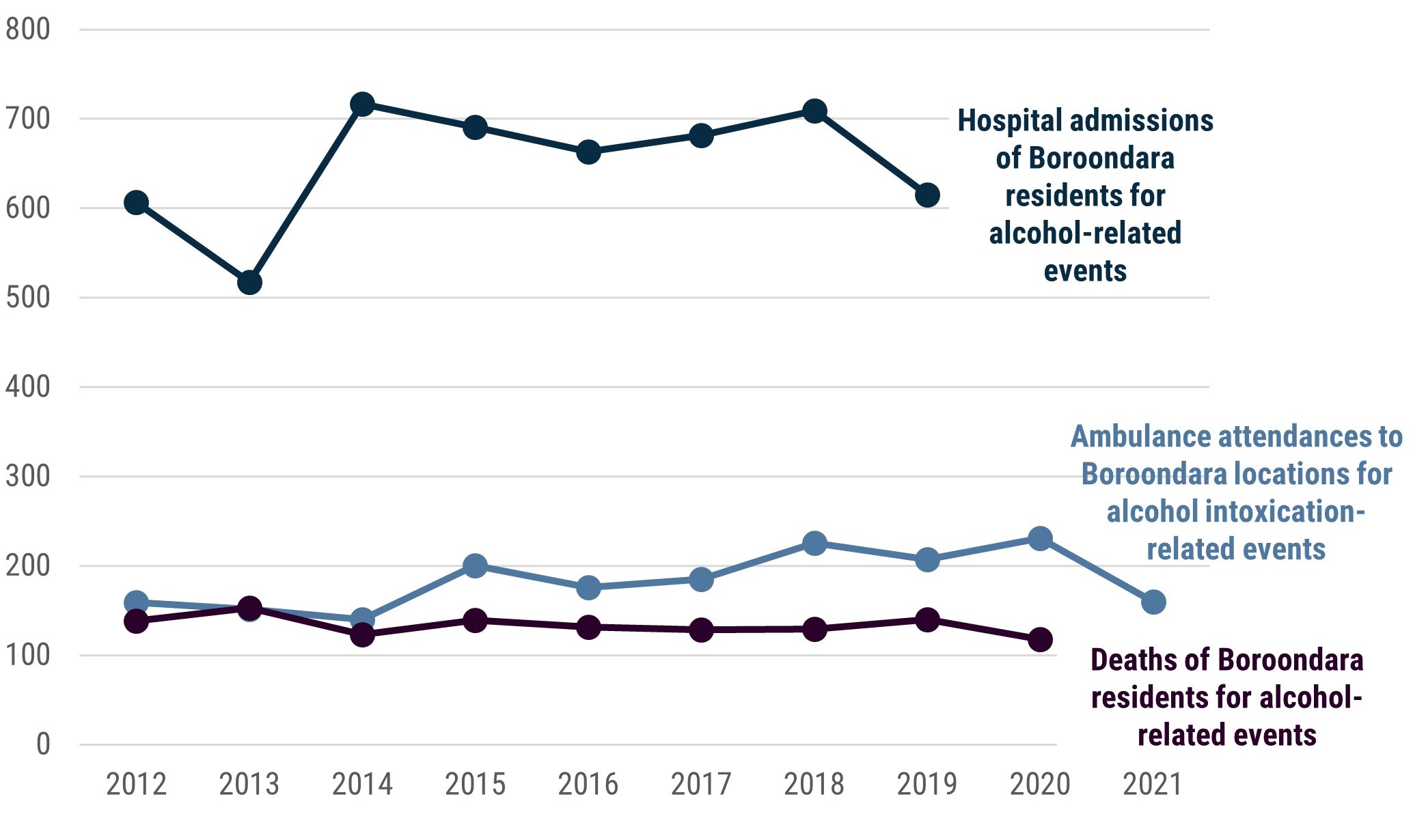
Figure 5: The rate of alcohol-related harms per 100,000 Boroondara residents appears to be relatively stable for deaths, but, at least until the COVID-19 pandemic, trended slightly upward for ambulance attendances. Note: deaths data is for calendar year. Hospitalisation and ambulance attendance data is for the financial year beginning with the labelled year. For example, the 2021 axis point for ambulance attendances shows data for the 2021–22 financial year.
Figure 6 presents the most recent data on alcohol-related ambulance attendances, hospital admissions and deaths. For the years shown, Boroondara had a higher rate of hospital admissions and deaths but a lower rate of ambulance attendances. This pattern is also evident for earlier years and may be related to the fact that ambulance attendance data is for patients attended in Boroondara, whereas the other 2 metrics are for Boroondara residents.
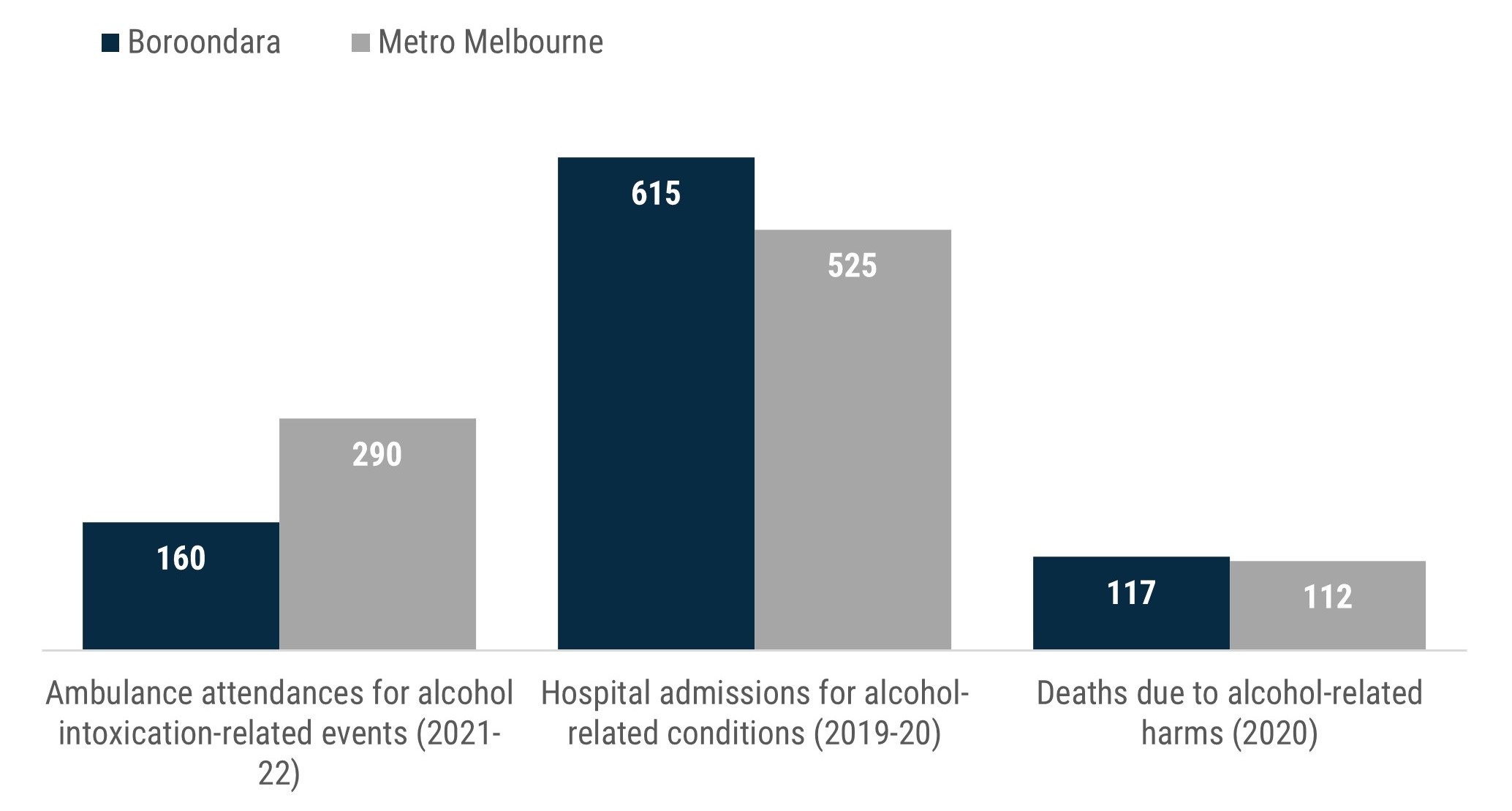
Figure 6: Ambulance attendances to Boroondara locations are lower per 100,000 than across metropolitan Melbourne, but Boroondara residents are more likely to be admitted to hospital or die from alcohol-related causes.
Figures 7,8,9 and 10 show the age and sex profile of those impacted by alcohol-related harms. The contrast between Figures 7 and 8 shows that while middle-aged Boroondara residents are most likely to need an ambulance for alcohol alone, the combination of alcohol and other substances is most likely to impact young people aged 20 to 24.
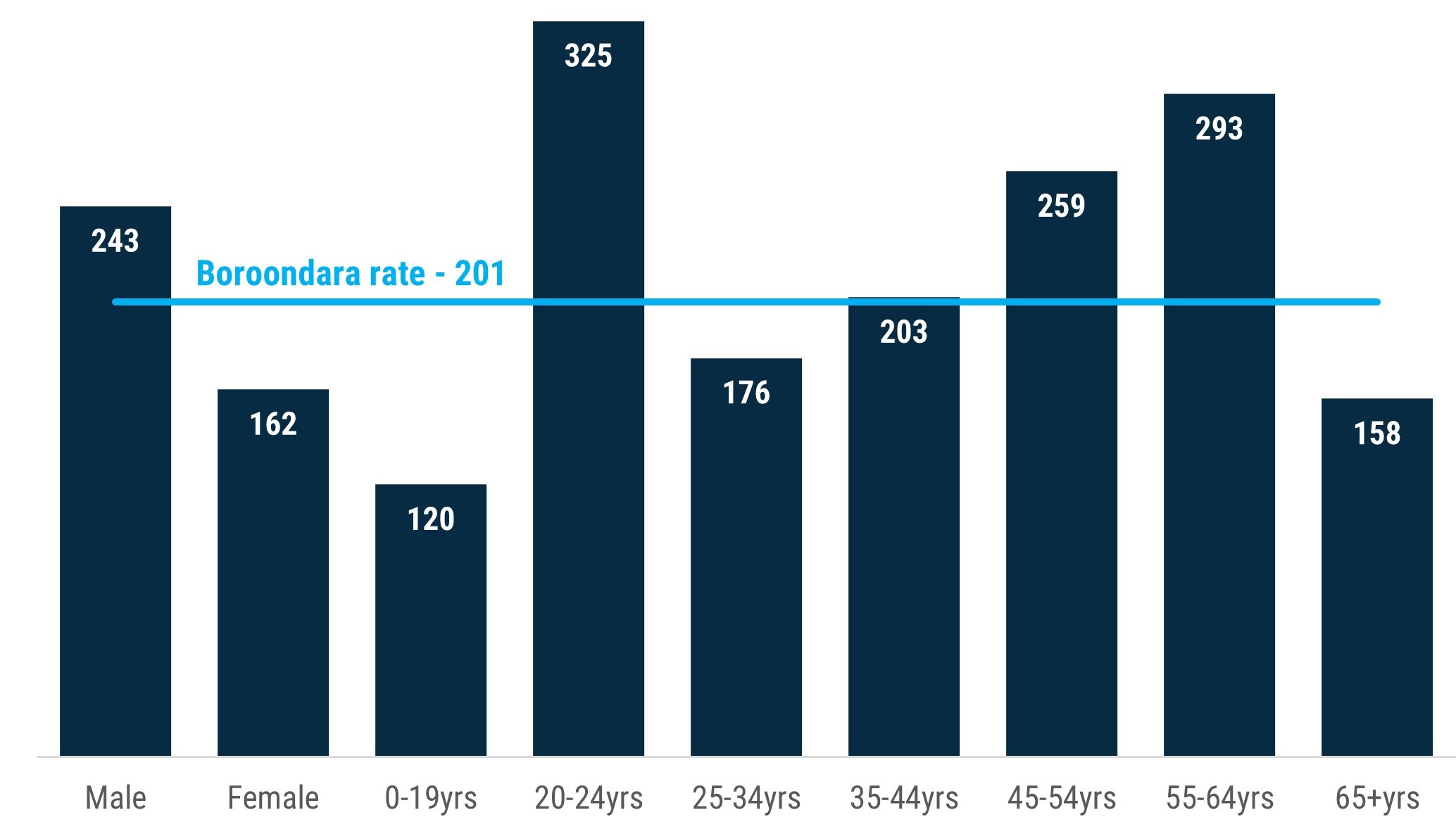
Figure 7: In Boroondara during 2021–22, people aged 20 to 24 were most likely to be attended by an ambulance for alcohol-intoxication related events where other substances may or may not have also been involved.
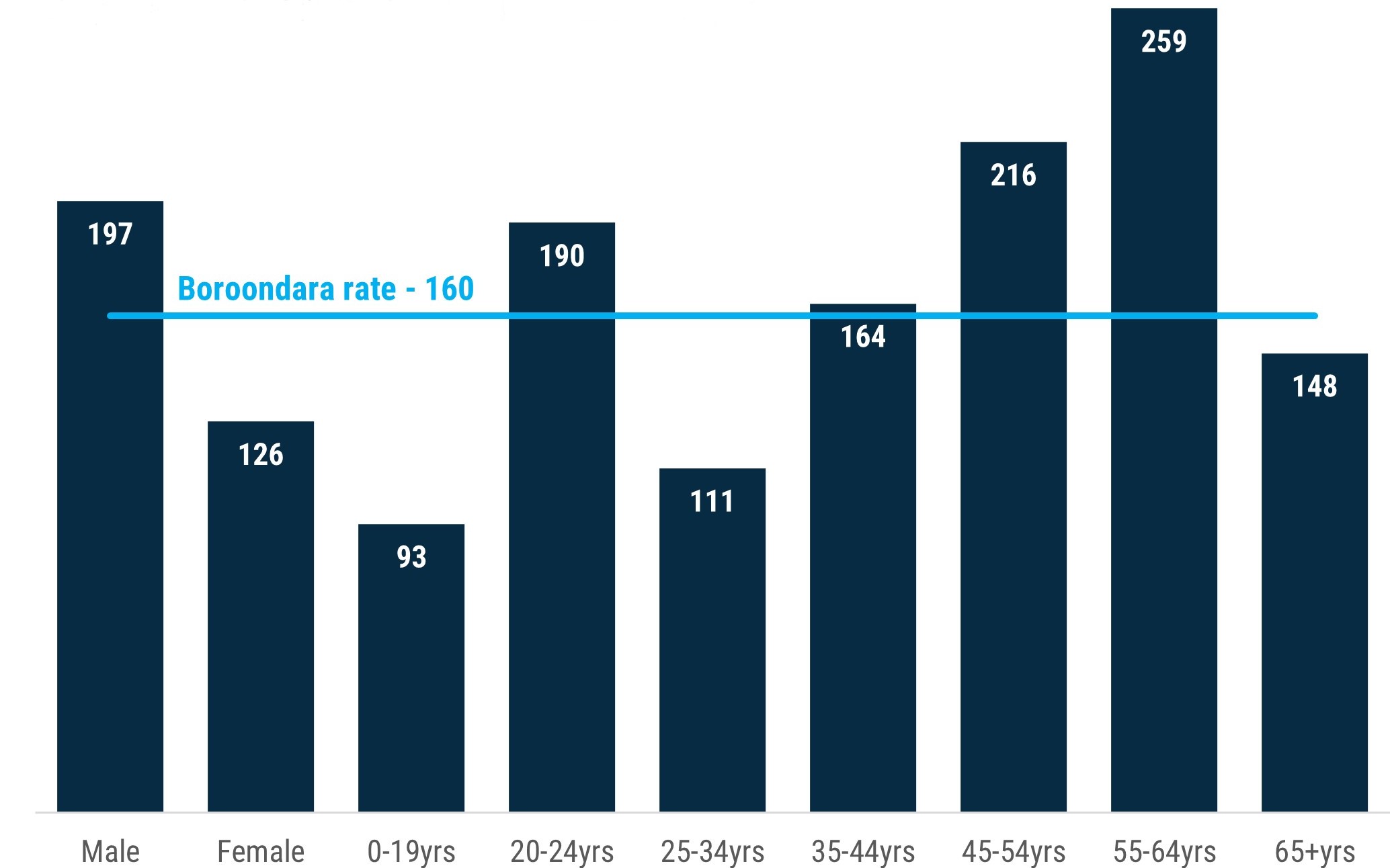
Figure 8: In Boroondara during 2021–22, those aged 45 to 64 were more likely to be attended by an ambulance for alcohol-intoxication related events where no other substances were suspected.
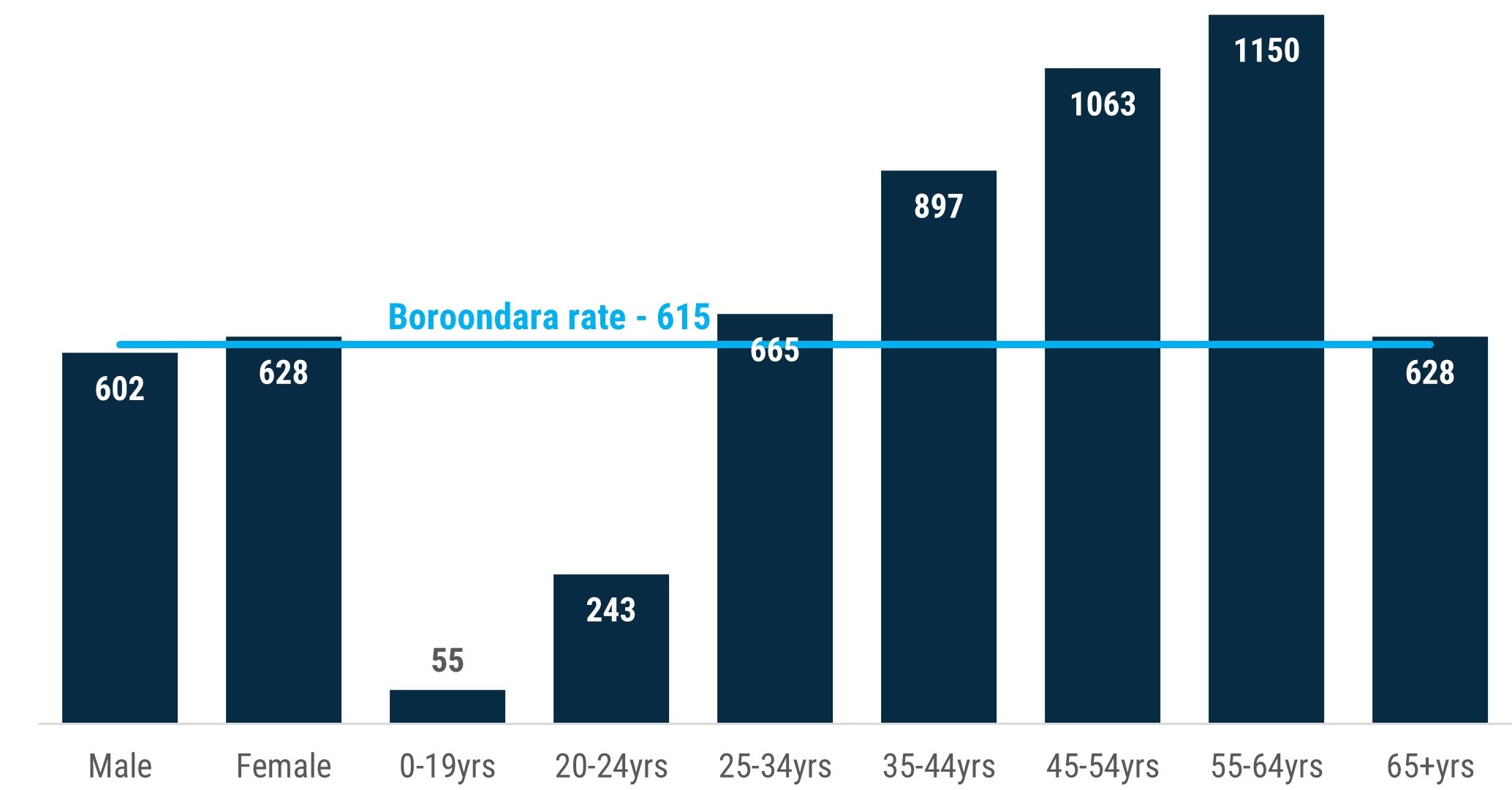
Figure 9: Among Boroondara residents during 2019–20, increasing age was linked to increasing likelihood of being admitted to hospital for alcohol-related events, up to age 65 and over.
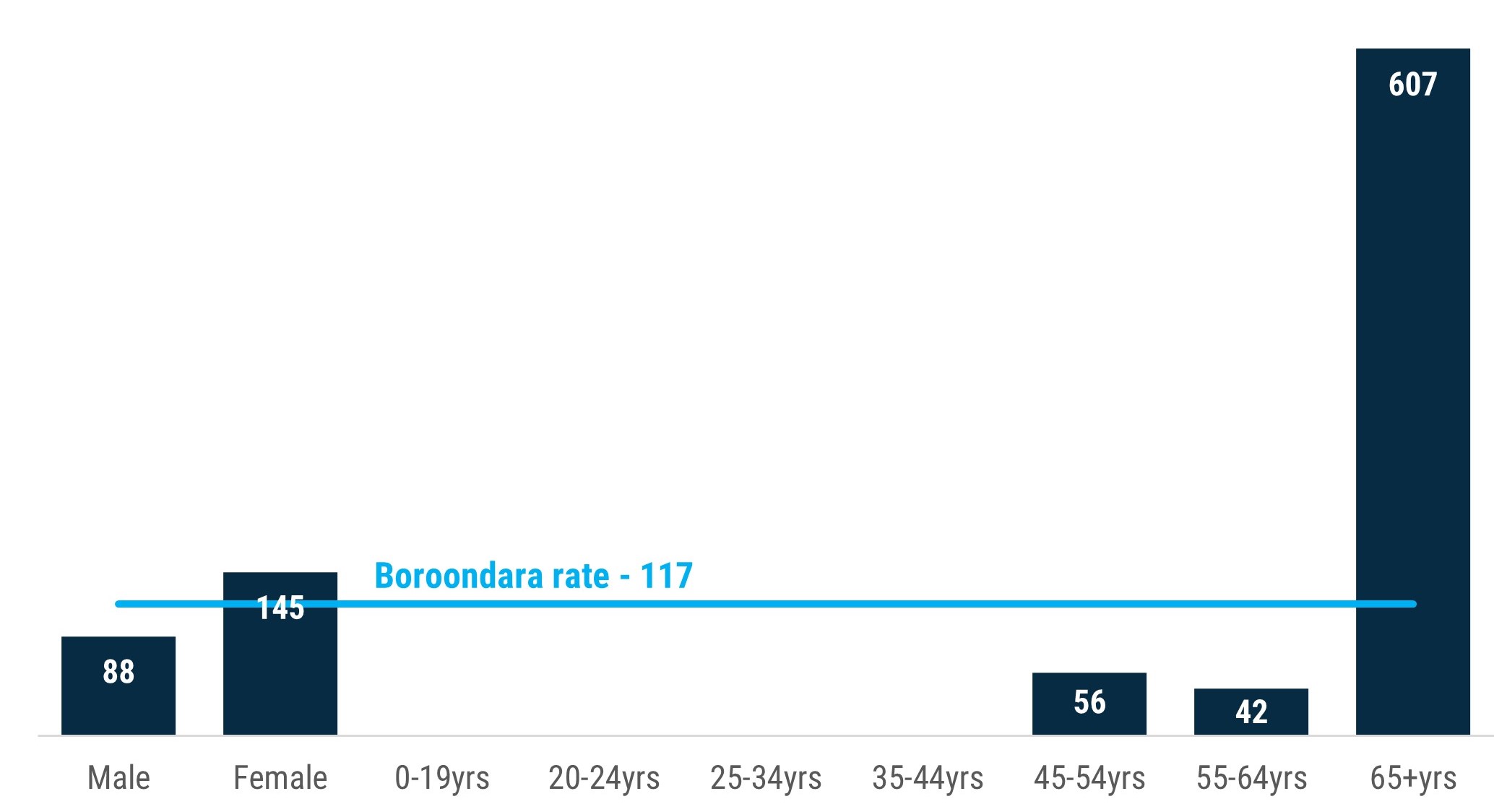
Figure 10: During 2020, Boroondara residents aged 65 and over were much more likely than other age groups to die from alcohol-related harms.